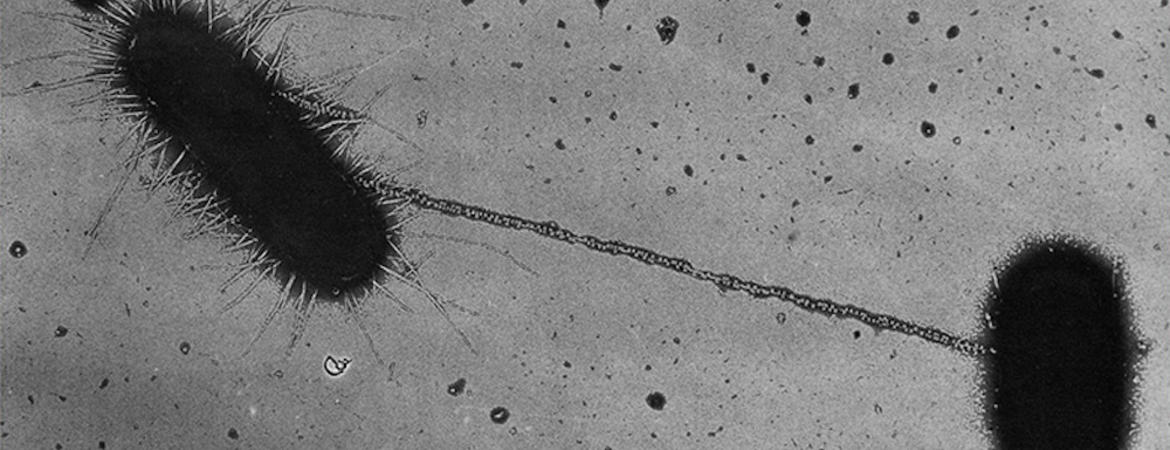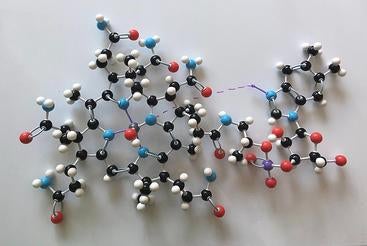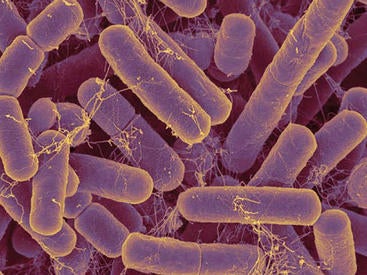
Your gut bacteria need vitamin B12 just as much as you do. Though DNA is usually passed from parent to child, new research shows gut bacteria transfer genes through “sex” in order to take their vitamins.
Without vitamin B12, most types of living cells cannot function. As a result, there is strong competition for it in nature. A new UC Riverside study demonstrates beneficial gut microbes share the ability to acquire this precious resource with one another through a process called bacterial sex.
“The process involves one cell forming a tube that DNA can pass through to another cell,” said UCR microbiologist and study lead Patrick Degnan. “It’s as if two humans had sex, and now they both have red hair.”
Scientists have known about this process for decades, and its ability to transfer what are known as “jumping genes” between organisms. Until now, the majority of studied examples have been responsible for helping bacterial cells stay alive when people ingest antibiotics.
“We’re excited about this study because it shows that this process isn’t only for antibiotic resistance. The horizontal gene exchange among microbes is likely used for anything that increases their ability to survive, including sharing vitamin B12,” Degnan said.
Results of the study have been published in the journal Cell Reports.
Previously, Degnan worked on a project in which he and his colleagues identified an important transporter responsible for getting B12 into gut microbial cells. More recently, he was studying jumping genes, trying to identify what kinds of information they were transferring. Quickly, Degnan recognized the vitamin B12 transporters as the cargo.
To demonstrate what they suspected, Degnan and his team mixed bacteria that could transport B12 and some that couldn’t. Being on a dish together gave the bacteria an opportunity to form a tube called a sex pilus that facilitated the transfer. After, they identified that bacteria previously unable to transport B12 were all still alive and had acquired the genes with the ability to transport B12.
They did a second experiment examining the entire genome of the bacteria.
“In a given organism, we can see bands of DNA that are like fingerprints. The recipients of the B12 transporters had an extra band showing the new DNA they got from a donor,” Degnan said.
Not only was the experiment successful in test tubes, but also inside mice.
The type of beneficial gut bacteria used in the study are Bacteroides, which reside in the large intestines of most people. One of their most important services to humans is breaking down complex carbohydrates for energy.
“The big, long molecules from sweet potatoes, beans, whole grains, and vegetables would pass through our bodies entirely without these bacteria. They break those down so we can get energy from them,” Degnan explained.
Bacteroides, along with other bacteria, also give our guts a barrier layer that can help restrict pathogens from invading. For example, previous research led by co-author Ansel Hsiao, also at UC Riverside, shows some humans have communities of microbes in their gut that make them more resistant to cholera.
Learning how to keep these bacteria healthy could also help benefit people, given the important services they perform.
“There’s no one way to have a healthy microbiome, but generally, having a diverse community of anaerobic bacteria is a healthy thing and can have beneficial effects,” Degnan said.





